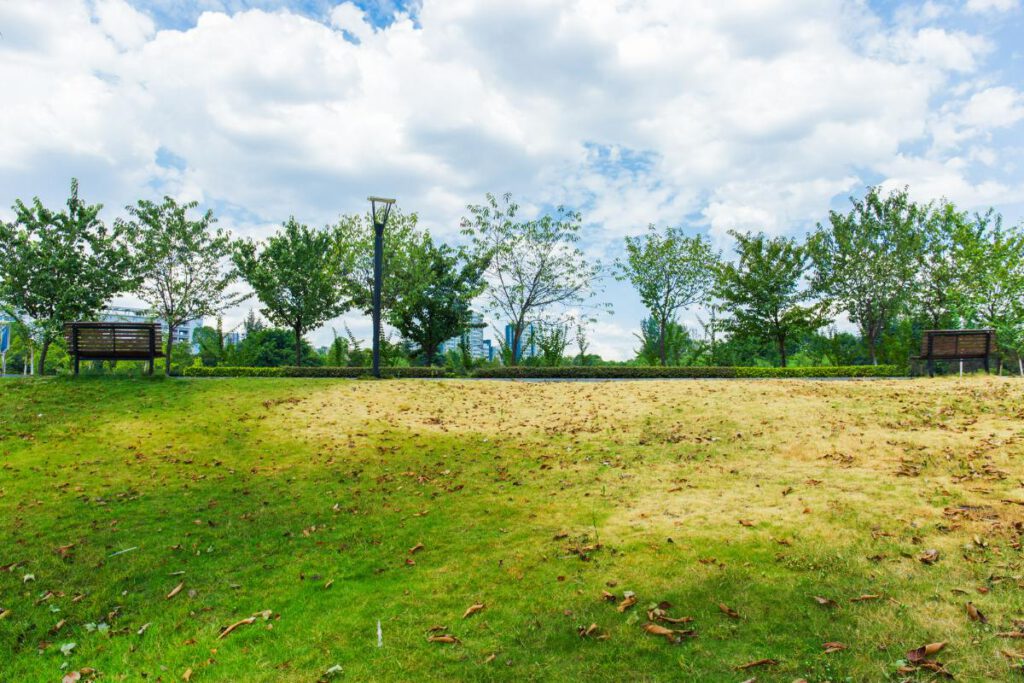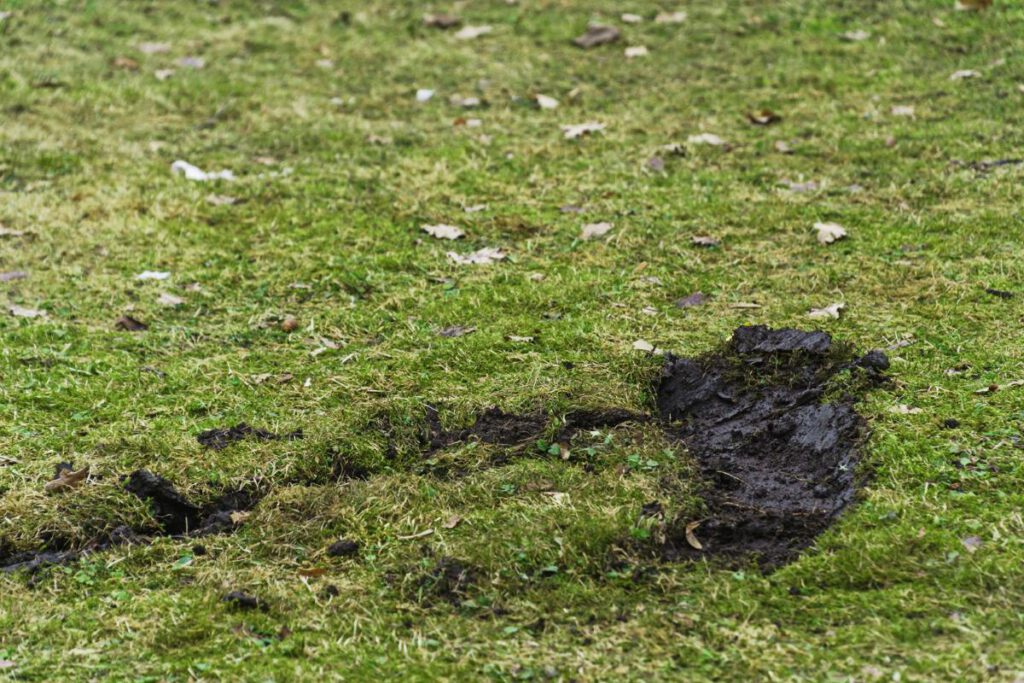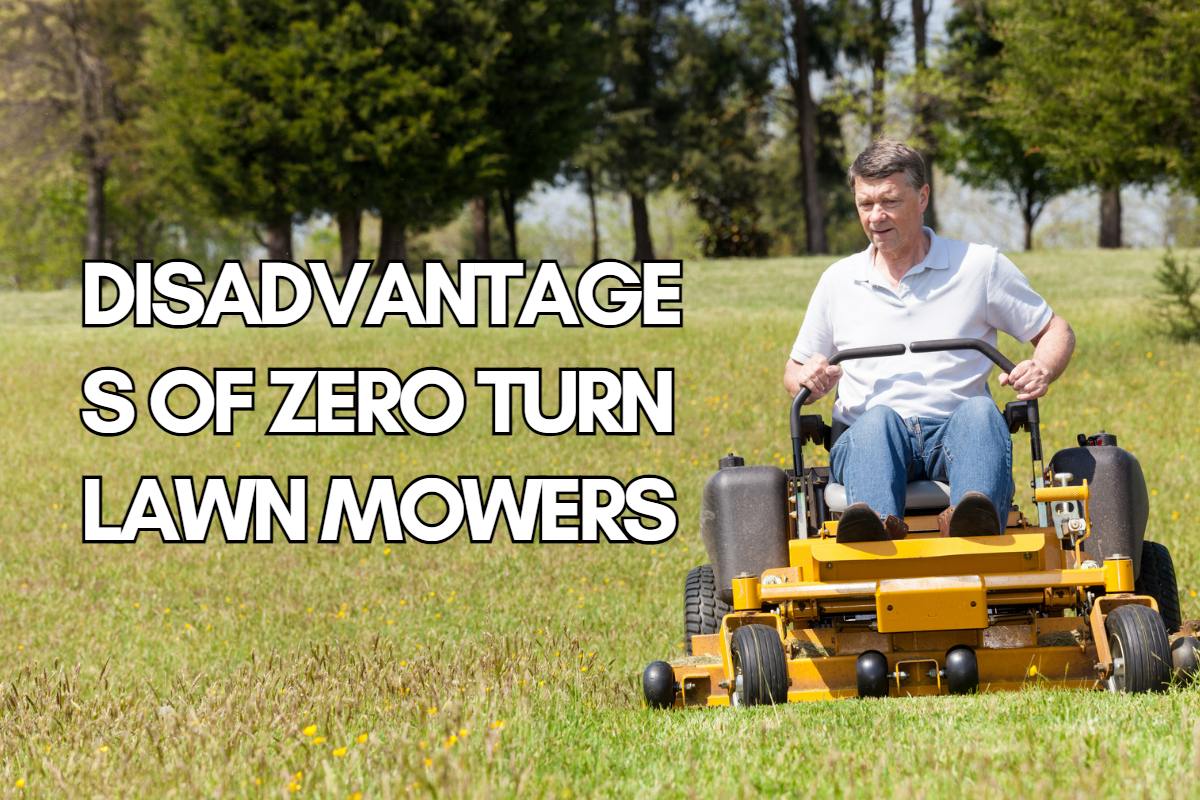Zero-turn mowers are known for their ability to make sharp turns and cut closely around obstacles. This makes them ideal for maintaining the lawn areas around roses without damaging the flower beds. However, zero-turn mowers, praised for their efficiency and speed, aren’t always the heroes of lawn maintenance they’re made out to be. As with any machine, they come with potential downsides and dangers, including the possibility of accidents. Understanding the dangers of a zero-turn mower is important, but before we plunge into the details, it’s crucial to first establish what these riding learn mowers are.
As the name suggests, a zero-turn mower is a riding lawn mower that has a ‘zero’ turning radius (zero turns). This is possible because of the independent wheel motors on each of the rear wheels: one wheel can turn forward while the other turns in reverse, allowing the mower to pivot on its axis and change direction swiftly. This turning capability is advantageous for maneuvering around obstacles and optimizing mowing efficiency in large, open areas.
Disadvantages of Zero Turn Mowers
As efficient and powerful as a zero turn lawn mower can be, it also has its share of disadvantages and dangers, including those that could lead to accidents. Here, we will explore these potential drawbacks in detail.
#1. High Initial Investment
One of the first deterrents potential buyers encounter when considering zero-turn mowers is their price. These machines represent the upper echelon of lawn care equipment, and their cost reflects that. With prices often starting in the thousands, purchasing a zero-turn mower requires a considerable initial investment.
#2. Steep Learning Curve
Contrary to traditional mowers, zero-turn mowers operate using a dual-lever system to control direction and speed. This method, while efficient once mastered, can be initially confusing and require a period of adjustment. For novices or those transitioning from other mower types, the learning curve can be steep.
#3. Poor Performance on Slopes

Zero-turn mowers are known for their agility on flat terrain. However, their performance on slopes and uneven ground is less impressive. Their design, which favors maneuverability, compromises stability, making it risky to mow on steep inclines. The potential for sliding or losing control on a slope is a considerable safety concern.
#4. Difficulty with Smaller Lawns
Zero-turn mowers excel in large, open areas and large lawns where their speed and turning ability can be fully utilized. However, in smaller lawns with many obstacles, these machines may be overkill. Their size and speed can make it challenging to navigate around small obstacles or through narrow passages.
#5. High Maintenance Cost
The sophisticated engineering behind zero-turn mowers isn’t just reflected in their purchase price but also in their maintenance costs. Their complex mechanisms require regular professional servicing, and their parts can be more expensive to replace.
#6. Limited Multi-functionality
Many traditional mowers offer multi-functionality, such as bagging, mulching, or even snow plowing. In contrast, zero-turn mowers often lack these extra features or require expensive attachments to enable them.
#7. Noise and Vibration
Zero-turn mowers are powerful machines, and with that power comes noise and vibration. Operating these mowers in the early morning and without appropriate protection can contribute to neighbors’ complaints and hearing loss over time. The vibration can also cause discomfort or fatigue, especially during extended mowing sessions.
#8. Fuel Consumption
Zero-turn mowers are typically gas guzzlers. The high-speed, high-power operation that makes them so efficient also consumes a substantial amount of fuel. This fuel consumption not only impacts your wallet but also has environmental implications.
#9. Lack of Exercise
Many homeowners view lawn care as a way to get some exercise. With traditional push mowers, mowing the lawn can provide a moderate cardiovascular workout. In contrast, zero-turn mowers, with their comfortable seats and efficient operation, eliminate most physical exertion.
#10. Not Ideal for Rough Terrains
Zero-turn mowers work best on well-maintained, relatively smooth lawns. If your property includes very rough terrain or terrains with lots of rocks, holes, or other obstacles, a zero-turn mower might not be your best option. They have less ground clearance compared to other mowers and may be prone to damage from such obstacles.
#11. Safety Concerns
While all mowers come with inherent dangers, the design of zero-turn mowers presents some unique safety concerns. Their high speed can make them more difficult to control, particularly for inexperienced users. Additionally, the risk of tipping or sliding on slopes has been mentioned before.
#12. Environmental Pollution
In addition to their high fuel consumption, zero-turn mowers also emit significant levels of greenhouse gases. If you’re concerned about your carbon footprint, the environmental impact of operating a gas-guzzling zero-turn mower should be taken into account.
#13. Limited Towing Capabilities
While some zero-turn mowers offer towing capabilities, they are generally not designed for heavy-duty hauling tasks. If your lawn care involves frequent towing or hauling, a lawn tractor may be a more suitable option.
#14. Potential for Lawn Damage
The “zero-turn” feature allows the mower to pivot 180 degrees without leaving a circle of uncut grass. However, if not operated correctly, this can lead to turf damage. Fast turns, starts, or stops can rip up the grass and create unsightly marks.
#15. Incompatibility with Certain Accessories
Many lawn care accessories are designed with traditional tractors in mind. As such, finding compatible accessories for a zero-turn mower can be challenging. Even when available, they can often be more expensive due to the less widespread use of zero-turn models.
#16. More Electrical Issues
Owing to their more complex construction, zero turn mowers often house more sophisticated electrical systems than their traditional counterparts. While this advanced technology can provide numerous benefits, it also introduces the potential for additional electrical issues. These mowers may suffer from more frequent electrical failures, which can lead to more downtime and higher repair costs.
#17. Inefficient On Wet Lawn

While zero turn mowers are designed to provide superior performance on dry, flat terrain, their performance tends to waver when faced with wet grass. The wet conditions can cause the mower to slip or slide, reducing cutting efficiency and increasing the potential for turf damage. This limitation can present significant challenges in regions with high rainfall or for those who prefer to water their lawn before mowing.
#18. Difficult to Repair
Finally, due to the complex mechanics and advanced technology behind zero-turn mowers, repairs can be significantly more challenging than a traditional push mower or riding mower. A small mechanical issue can turn into a major headache, requiring specialized knowledge or the expertise of a professional technician. Additionally, parts for zero-turn mowers may not be as readily available as those for more traditional mower types, potentially leading to longer downtimes for repairs.
Summary
To summarize, while zero-turn mowers are undoubtedly powerful tools that offer impressive speed and maneuverability, they are not without their drawbacks. The high initial investment, ongoing maintenance costs, learning curve, and several other disadvantages highlighted above should be carefully considered when deciding if a zero-turn mower is the right choice for you. It’s essential to weigh these considerations against your lawn’s specific needs, your budget, and your comfort with the machine’s operation.

